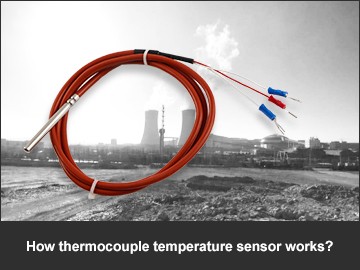How thermocouple temperature sensor works?
As a kind of temp measuring tool, thermocouple temperature sensor is usually used in conjunction with display instruments, recording instruments and electronic regulators. Thermocouples can directly measure the surface temperature of liquid vapor and gaseous media and solids in the range of 0 ° C to 1600 ° C in various productions. Then how does this measurement method perform?
Thermocouple temperature sensor uses two different conductors or semiconductors A and B to form a loop. When the two ends are connected to each other, as long as the temperature at the two nodes is different, the temperature at one end is T, which is called the working end or the hot end, and the other end The temperature is T0, which is called the free end (also called the reference end) or the cold end, an electromotive force will be generated in the loop. The direction and magnitude of the electromotive force are related to the material of the conductor and the temperature of the two junctions. This phenomenon is called "thermoelectric effect", and the loop composed of two conductors is called "thermocouple". These two conductors are called "hot electrodes", and the generated electromotive force is called "thermoelectromotive force". Since a certain thermoelectromotive force corresponds to a certain temperature, we only need to measure the thermoelectromotive force to achieve the purpose of temperature measurement.
Because the thermocouple temperature sensor has a wide temperature range, stable performance, and high measurement accuracy, it has been recognized by the public in the chemical industry. The thermal resistance thermometer is one of the indispensable instrument components in our chemical process. It is the key to ensure the normal operation of production to ensure product quality and safe production.






